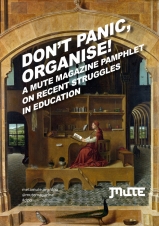China's cheap labor pool running dry
Asia Times Online (www.atimes.com) on recent data pointing to impending exhaustion of China's 'reserve army' of migrant labour from rural parts of the North and West. Which implies strong upward pressure on wages, and the likelihood of counter-attack by 'restructuring'.
China's cheap labor pool running dryBy Wu Zhong, China EditorHONG KONG - China will begin to feel the pain of labor shortages nationwide in the next couple of years - much earlier than previously forecast - as the country's seemingly ample supply of rural migrant workers dries up, according to the latest studies by state think-tanks.
This will make a significant impact, forcing China's economy, which relies heavily on labor-intensive export-oriented manufacturing, to undergo a profound restructuring.
A new survey conducted by the Development Research Center of
the State Council, China's cabinet, has found the supply of rural labor in the country is not as ample as generally thought.
The survey, which covered 2,749 villages in 17 provinces, shows that on average 74% of the villages no longer any surplus laborers available to work in distant cities.
So only about one-quarter of the villages surveyed say they still have some surplus labor below the age of 40. And this percentage is smaller in central China (24%) and the west (23.6%) than in the east (28.4%). This suggests the supply of cheap labor from the relatively poorer central and western regions is declining. This also indicates that the labor shortage is spreading from the economically booming east-coastal regions to the inland.
The survey is cited as evidence in the latest Chinese Academy of Social Sciences (CASS) green paper on population and labor, published last Thursday, to support its argument that China is now approaching a "Lewisian turning point", moving from an era of labor surplus into an era of labor shortage.
"Lewisian turning point" is based on a theory of Nobel laureate Arthur Lewis (1915-91), who said a developing country's industrial wages begin to rise quickly at the point when the supply of surplus labor from the countryside tapers off.
The CASS report says the Chinese economy now faces an imminent labor shortage. According to the green paper, labor could become in short supply by 2009 even in the rural areas. An earlier CASS study predicted China would begin to face a labor shortage in 2010.
The CASS report seems to affirm an earlier estimation by the National Development and Reform Commission (NDRC), the country's top economic-planning body, that the supply of new labor in the country peaked last year.
According to official statistics, the total number of rural laborers is now about 500 million. The Ministry of Agriculture estimates that at least 170 million laborers are needed to sustain the country's agricultural production and another unspecified, but considerable number is needed for other rural labor. Another 150 million are estimated to be working at township enterprises run by farmers themselves.
Various estimates put the number of rural migrants working in cities at between 80 million and 130 million. That means available surplus rural labor is between 20 million and 70 million. Not many indeed, considering the current labor shortage in economically developed regions such as the Pearl River Delta, where the annual shortage alone is estimated to be at least 2 million.
And things may become worse as the countryside absorbs more surplus labor under Beijing's policy to boost rural development and farmers' income.
The shortage will eventually trigger a demand for higher wages, possibly as soon as in three years, the CASS green paper says.
In fact, after east-coast regions began to suffer labor shortages a few years ago, wage increases for rural migrants began accelerating. According to the green paper, the average monthly wage of a rural migrant worker grew from 781 yuan (US$102) in 2003 to 953 yuan ($125) in 2006. The year-on-year pay increment rate was 2.8% in 2004, 6.5% in 2005 and 11.5% in 2006.
Moreover, the proportion of rural workers making 600 yuan or more a month has also been on the rise - from 43.2% in 2003 to 63.6% in 2006. And last year, the proportion of rural migrant workers making 1,000 yuan or more a month accounted for 25.9% of the total.
Rising labor costs go right to the nation's economic heart as foreign investors forsake the world's factory floor for cheaper workers elsewhere. This will force the Chinese economy to undertake a profound restructuring.
In fact, as Asia Times Online reported on June 6 (HK SMEs withdraw from mainland China), more than 2,600 of the 8,000 Hong Kong-invested small and medium-sized enterprises involved in the processing and assembly factory business have pulled out of the Pearl River Delta region after suffering labor shortages and tax increases.
Some Hong Kong investors have relocated their manufacturing factories from the Pearl River Delta to inland China or Vietnam where labor costs are even cheaper.
The one-child policy imposed by the Chinese government over the past three decades has been blamed for the current labor shortage. But the National Population and Family Planning Commission has made it clear that the government has no intention of revising the policy in the foreseeable future, calling it a "long-term national policy".
Even if the government wanted to change the one-child policy now, analysts say it would not help ease the imminent labor shortage. As a Chinese saying states, "Distant water cannot put out a nearby fire."
Wu Yaowu, of CASS's Institute of Population and Labor Economics, has urged the government to speed up its economic restructuring before China completely loses its competitive edge in labor-intensive manufacturing.
For instance, the green paper urges the government to speed up the reform of the rigid hukou, or residency registration, system and to lift other restrictions to ease the migration of people across the country.
Du Yang, another researcher with the Institute of Population and Labor Economics, says migration reforms would help prolong the survival of labor-intensive industries and buy time for economic restructuring.
Mute Books Orders
For Mute Books distribution contact Anagram Books
contact@anagrambooks.com
For online purchases visit anagrambooks.com






